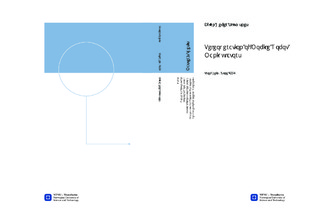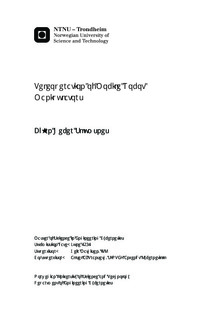| dc.description.abstract | With ever cheaper and more versatile robots, the use of robotic systems in creases rapidly. Although robots are becoming more intelligent, the cognitive capabilities of humans can still not be matched. By combining the intelligence of a human operator with the strength, endurance and size of a robot, in addition to separating the robot and operator to avoid danger to the operator, the applications are innumerable. The use of an operator to remotely control a robot is often referred to as teleoperation.In a teleoperation system it is important to present the state of the robot and the remote environment with high accuracy and in a comprehensible way. With a large number of sensor data, a solution is to enhance the feeling of telepresence or transparency of the system. That is, making the human operator feel like he or she is interacting directly with the manipulated environment. This could be achieved by using a haptic joystick, which is able to generate force feedback to the operator, to present information about the slave robot. Examples of such informations are the distance to an obstacle or deviation from a desired movement. Such a system is often called a bilateral teleoperation system, where the stability is especially sensitive to transmission delay. This time-delay is often introduced by the communication network between the human operator and remote robot.This thesis presents a control architecture for interpreting a change in the joystick position to a desired end-effector velocity for a mobile manipulator. In addition to calculating the velocity, the controller is designed to comply with the joint limits, optimize the manipulability and handle time-varying transmission delay. A force, that depends on the deviation between the desired and measured end-effector position, is sent back to the human operator, as well as a visual feedback. To increase the precision of the end-effector movement the position of the movable robot base is fixed when the manipulability is above a given threshold, and moves only to increase the workspace of the robot. The designed system is implemented using Robot Operating System (ROS) and tested on a virtual mobile manipulator. The virtual robot is based on a model of a Schunk LWA3 7-DOF manipulator, mounted on a Seekur Jr. wheeled mobile base.Several experiments prove that the system with the proposed control architecture is stable when under influence of constant, as well as variable time-delay. Any standard deviation between the measured and desired end-effector position is eliminated, and the trajectory of the end-effector is almost identical the desired, though delayed when affected by communication delay. Neither the force feedback nor end-effector position show indications of dramatic change at the transition between fixed and moving robot base. Simulations with human operators show that they are able to move the end-effector of a virtual mobile manipulator from an initial position to a predefined goal, with the use of a Phantom Omni, haptic joystick. | nb_NO |

